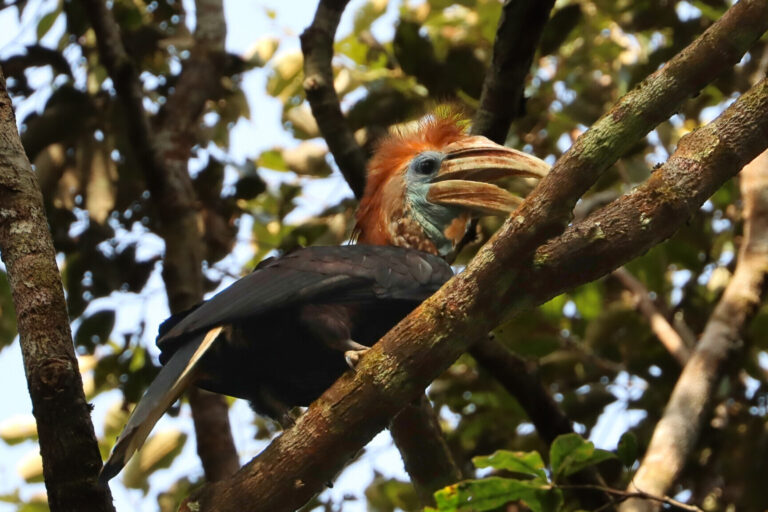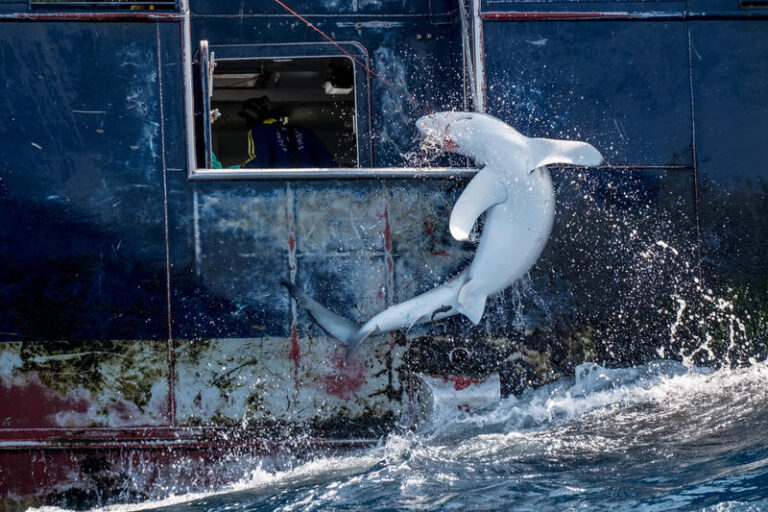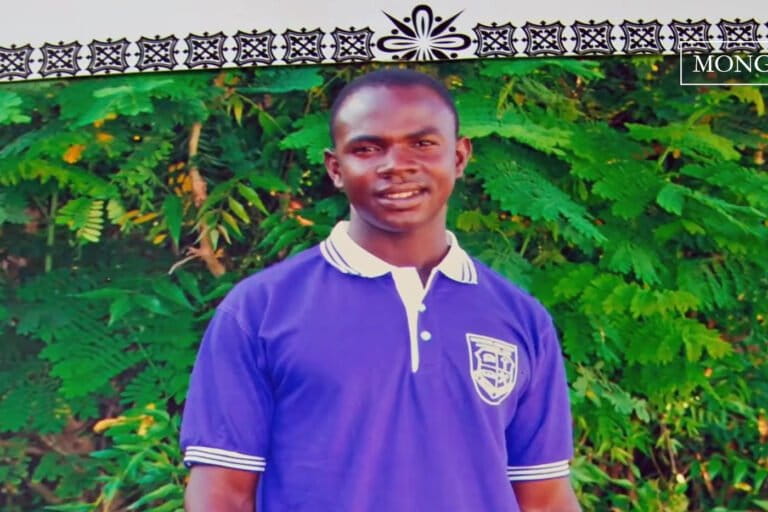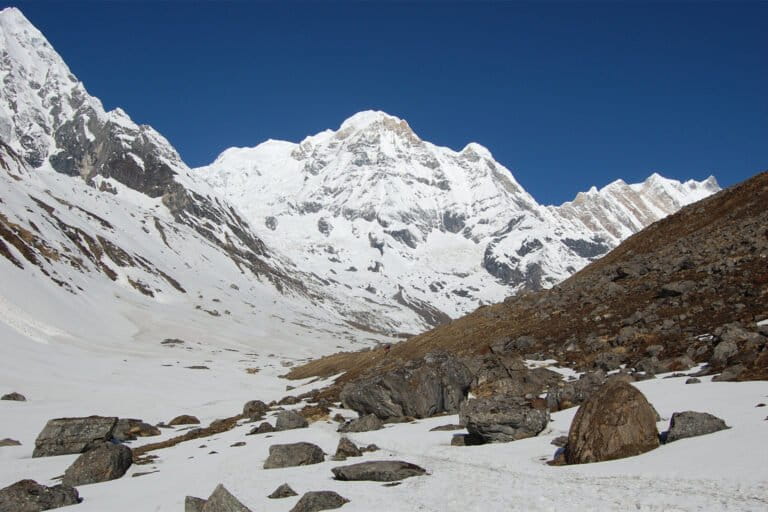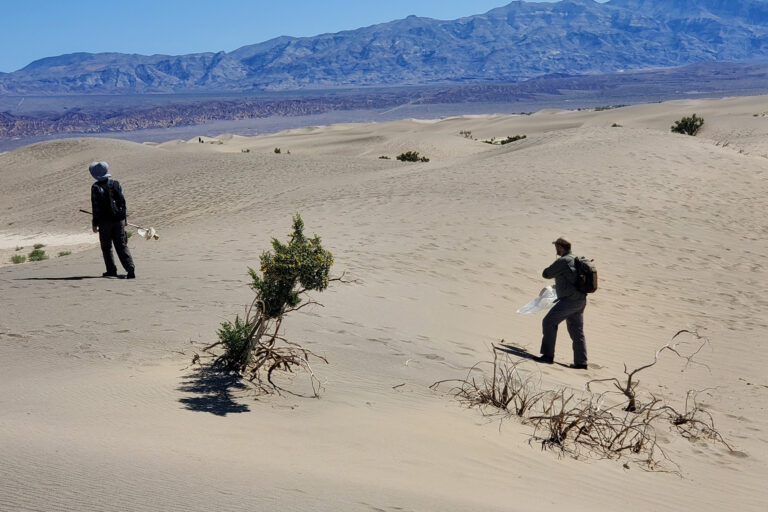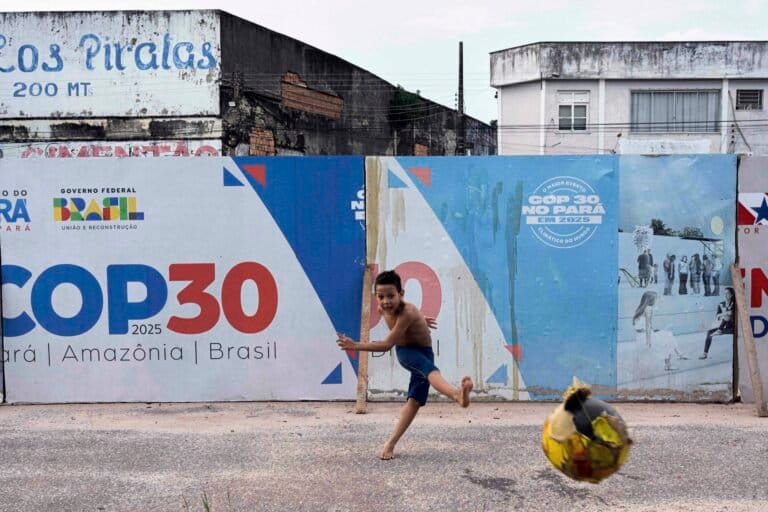- Two Indigenous Guajajara men were killed on Sept. 3 in Brazil’s Maranhão state and a 14-year-old Guajajara boy shot and hospitalized, Indigenous leaders and rights groups say.
- The day after, a 14-year-old Indigenous Pataxó boy was also allegedly gunned down and a 16-year-old shot and wounded as they sought to retake a farm that had reportedly been established illegally within their territory in Bahia state.
- On Sept. 11, another Indigenous Guajajara was murdered in Maranhão. In the past 20 years, more than 50 Guajajara individuals have been killed in the state, with none of the alleged perpetrators ever going on trial, advocates say.
- Indigenous groups and advocacy organizations are demanding justice for these and earlier killings, and have raised concerns about escalating violence against native peoples throughout the country.
Indigenous groups in Brazil are demanding justice after a spate of killings allegedly linked to land disputes left four people dead and two injured in the space of just 10 days, and raised concerns about escalating violence against native peoples throughout the country.
Janildo Oliveira Guajajara was shot and killed by unknown assailants in an apparent ambush in the municipality of Amarante, in the northeastern state of Maranhão, at dawn on Sept. 3. The perpetrators also shot and injured a 14-year-old Guajajara boy who was with Janildo at the time, Indigenous leaders and rights groups say. At almost the same time, unknown perpetrators reportedly ran over Jael Carlos Miranda Guajajara, 34, in a vehicle and killed him in the neighboring municipality of Arame.
The following day, unknown gunmen reportedly opened fire on a group of Indigenous Pataxó people as they sought to retake land within the Comexatibá Indigenous Territory, in the northeastern state of Bahia. Gustavo Silva da Conceição, a 14-year-old Pataxó boy, was killed in the incident, while another Pataxó boy, aged 16, was wounded in the arm by gunfire.
A week later, gunmen shot dead Antônio Cafeteiro Silva Guajajara, also in Arame, according to Lucimar Carvalho, a lawyer at the Indigenous Missionary Council (CIMI), an advocacy group affiliated with the Catholic Church. She told Mongabay that police in Amarante and Arame are investigating the incidents, including collecting witness statements. Carvalho said she had spoken with the Arame police chief and was told that he had requested reinforcements from São Luís, the Maranhão state capital.
“Public pressure is very important for the investigation of these murders that are becoming commonplace, without any punishment for all of this,” she said in an audio message. “We have to demand investigation and punishment of the culprits.”
In an email to Mongabay, the Maranhão state police said it’s investigating the crimes, in partnership with the Brazilian Federal Police, and that “details about the investigations will not be granted” in order to “not interfere with the police work.” The Federal Public Ministry (MPF) told Mongabay it is also investigating based on a report filed by CIMI.
Activists say it’s very likely these incidents are linked to land conflicts. Since 2018, Janildo Guajajara was a member of the “Guardians of the Forest,” a 120-strong group of Guajajara who banded together to protect the Arariboia Indigenous Territory against illegal loggers. The territory is home to both Guajajara communities and to the Awá Guajá people — a group of hunter-gatherers living in voluntary isolation from the rest of the world, and described by the NGO Survival International as the most threatened Indigenous group on the planet. Janildo Guajajara was the sixth Guardian killed since the group’s founding in 2012.
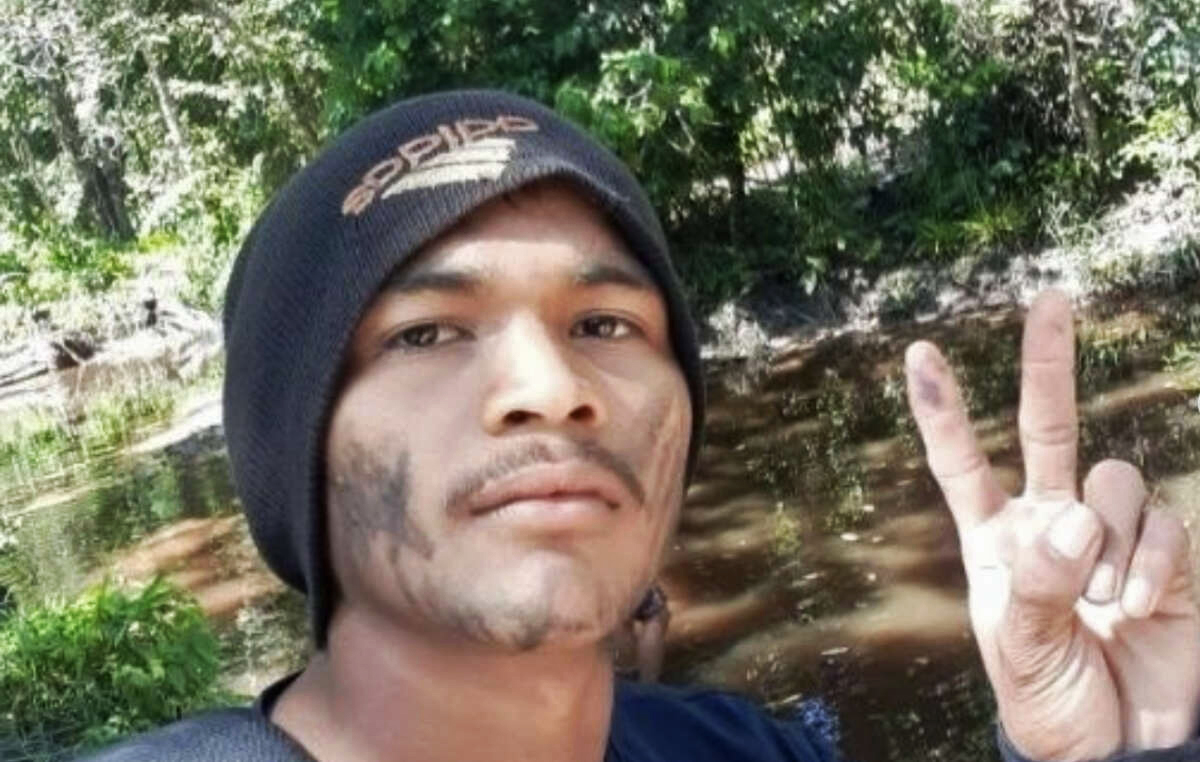
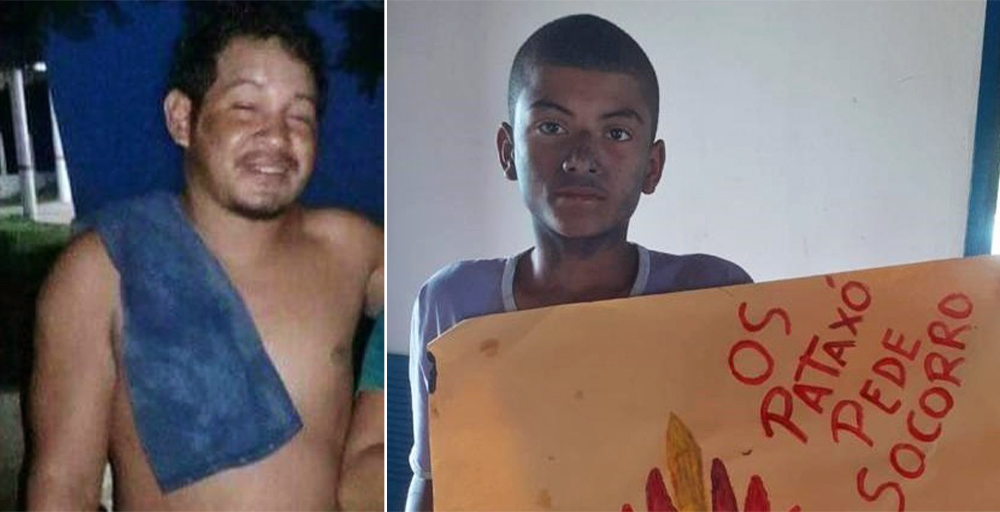
With three Guajajara killed in just over a week, “there’s no one in prison for murdering our brothers in war,” fellow Guardian Laercio Guajajara told Mongabay by phone. “Today I’m in the village. I cannot [even] walk alone. The fear is big.”
Over the past 20 years, more than 50 Guajajara individuals have been killed in Maranhão, with none of the alleged perpetrators ever going on trial, advocates say. In November 2019, Laercio Guajajara escaped an alleged ambush by loggers in the Arariboia reserve that killed fellow Forest Guardian Paulo Paulinho Guajajara. After the incident, Laercio Guajajara left the country for his own security and entered a protection program run by the Maranhão state government. But he gave up on both those avenues of escape to return, saying he couldn’t live far from his ancestral land, despite the risks.
Once back in Arariboia, he went on to become the coordinator of the Guardians for a year. But he recently left this position due to increasing threats. “There are threats, messages coming from the city,” Laercio told Mongabay, adding that one of these messages was addressed to his brother from an individual who didn’t know they were brothers, saying that he couldn’t go to a certain area any more.
Janildo Guajajara also faced threats, along with the other Guardians, after shutting down a road that had been cleared by illegal loggers in the Arariboia reserve’s Barreiro region, according to a statement from the Ka’a Iwar Association of Forest Guardians of Arariboia Indigenous Territory. Ka’a Iwar in the Guajajara language means “the people of the forest.”
“None of the other assassins of other Guardians of the Forest have ever been punished, nor are they behind bars,” said Ka’a Iwar Association head and Indigenous chief Olímpio Iwyramu Guajajara in a video message while touring Europe to highlight the Guardians’ work and the increasing risks they face. “So I come here to ask for justice and for an investigation to be really carried out to discover the authors of the killer of the forest warrior who was murdered … and may justice be done for life and for others who also lost their lives for us.”
Olimpio Guajajara, #Indigenous leader and Amazon Guardian, responds to the killing of fellow Guardian, Janildo Guajajara. This isn’t the first time this has happened – Janildo is the sixth Guardian to be killed in recent years.
1/2 pic.twitter.com/D7m3QlnU2y
— Survival International (@Survival) September 7, 2022
Land demarcation battle
In Bahia, the shooting was allegedly carried out by 12 men in two vehicles who attacked the Pataxó people with firearms and tear gas grenades. It was in apparent retaliation at the Indigenous community’s action on Sept. 2 to retake an area called the São Jorge farm that had reportedly been within the Comexatibá Indigenous Territory.
“At 5:25 a.m., the shooting started. There were almost 10 minutes of shooting, a lot of shooting,” a leader of the Comexatibá reserve was quoted as saying in a news release from CIMI, which added that the individual asked not to be named for security reasons. “There were a lot of pistol cartridges, rifles, 12-caliber, intact and spent bullets, tear gas canisters, which is a police thing. It was a professional job … It is sad for us.”
Images taken by Pataxó community members and shared with CIMI show several bullet casings and tear gas canisters that were allegedly used during the attack.

In June, 180 Pataxó members had retaken another area in the same region of the Comexatibá reserve that was being used for cattle ranching and growing pulpwood trees. Indigenous leaders said the area occupied by the farm falls entirely within the borders of the Comexatibá reserve, which spans 28,000 hectares (69,000 acres) north of the city of Prado, one of the first sites of Portuguese colonizers’ contact with South America’s native peoples in the 1500s. In that same month, another group of around 100 Pataxó took over a different farm, largely abandoned pasture, in the neighboring Barra Velha do Monte Pascoal Indigenous Territory and were allegedly expelled at gunpoint by landowners and their supporters
But in recent weeks, they reported being monitored by drones used to guide attacks by gunmen, so they decided to take back the farm where the drones appeared to be operating from.
“Two drone attacks were carried out here during the retaking [of the area], one last week, and another at the end of last week,” the Pataxó leaders are quoted as saying in the CIMI release. “Young people followed this drone, which landed on a neighboring farm across the river, which was not being retaken. So the young people occupied the farm, because the retaking was being filmed for gunmen to come and attack the Indigenous people, at the behest of the farmers. That’s why the retaking was carried out.”
After the gun attack, military and police personnel reportedly went to the area and collected several bullet casings, including those meant for exclusive use by the military, such as tear gas grenades. The Federal Public Ministry (MPF) also reportedly sent a letter to the Ministry of Justice requesting the strengthening of the Federal Police in the region.

“There has been a series of repossessions by the Pataxó people since June, and there was also an armed attack by farmers who claim to own land within the territories, with signs of , due to the use of weapons for the exclusive use of the Armed Forces and Military Police,” Lethicia Reis, a lawyer at CIMI, said in the statement.
The increasing violence in Bahia comes as the Pataxó are mired in bureaucratic limbo over the status of their lands. The demarcation process that they’re seeking for the Comexatibá and Barra Velha do Monte Pascoal reserves still hasn’t been finalized. At the same time, the Pataxó face both shrinking space for their subsistence livelihoods and an increase in conflicts as real estate and monoculture developments encroach on their territory, according to Reis.
Since President Jair Bolsonaro took office at the start of 2019, he hasn’t approved any Indigenous territories, in keeping with a campaign promise to not demarcate “a single centimeter more” of Indigenous lands.
In an emailed statement, the civil police said it launched an inquiry into the murder; witness hearings were carried out, along with on-site expertise reports to assist in the investigation of the case. “However, the authorship is still unknown,” the police added.
In an emailed statement, Bahia’s department of public safety said that the Pataxó Inidgenous who were targets of attacks testified in Salvador, the state’s capital, on Sept. 9. It added that it will create a working group with police officers to coordinate “preventive and investigative actions” in the region.
The MPF in Bahia and Funai, the federal agency for Indigenous affairs, didn’t respond immediately to Mongabay’s requests for comment for this story.
Last year, 176 Indigenous people were killed in Brazil, six fewer than in 2020, which marked a 61% increase from the previous year (182 from 113), according to the annual atlas of violence released in August by CIMI. Indigenous territories also face increasing pressure. The CIMI report tracked 305 cases of “possessory invasions, illegal exploitation of resources and damage to property” in at least 226 Indigenous territories in 2021, up by 16% from the previous year and almost three times higher than the 109 cases recorded in 2018.
Activists say impunity is a key driver for all this violence. Last year, 35 people were killed in land-related conflicts in rural areas, a 75% increase from 2020, according to the Catholic Church-affiliated Pastoral Land Commission (CPT), which has tracked this issue since 1985. There were no convictions in any of those cases, according to the government’s own records. In the Brazilian Amazon, there have been more than 300 deaths related to land conflicts since 2009, according to a report from Human Rights Watch. Of these, just 14 cases — 5% — were brought to court.

In the Arariboia reserve, the perpetrators in the killing of Paulo Paulino Guajajara and attempted killing of Laercio Guajajara are expected to face a rare instance of justice that could set a legal landmark against impunity. The cases are expected to be tried before a federal jury — escalated to that level because of what prosecutors say was an aggression against the entire Guajajara Indigenous community and Indigenous culture. The trial is also expected to potentially set a precedent in prosecuting the killings of other Indigenous leaders and also for cases like the killings earlier this year of British journalist Dom Phillips and Indigenous rights defender Bruno Pereira in the Vale do Javari region of Amazonas state.
“If [an] Indigenous [person] does something wrong, the police come after him,” Laercio Guajajara told Mongabay. “I spent a month in jail for kicking out a logger … I was arrested for defending the land.”
The Federal Public Defender’s Office (DPU), representing one of the defendants in the Paulo Guajajara killing, has appealed the court decision that sent the case to a federal jury. Indigenous leaders and advocates of Indigenous rights are calling on the Federal Circuit Court for the First Region in Brasília for a speedy resolution to the case.
Lucimar Carvalho, a lawyer with CIMI and serving as a prosecutors’ assistant in the upcoming trial, told Mongabay in a phone message that CIMI is also following Janildo’s case, adding that the police continue to take statements about the crime.
Despite being skeptical given the countless cases of impunity, Laercio Guajajara said: “I hope they are convicted.”
But he added that he and the other Guardians of the Forest will keep fighting for their land: “You have to do it our way if you want to survive and defend the land.”
Crime and no punishment: Impunity shrouds killings of Indigenous Amazonian defenders
Update (Sept. 14, 2022): This article was updated to include information about the shooting death on Sept. 11 of Antônio Cafeteiro Silva Guajajara.
Banner image: Indigenous demonstration in Brasília in 2021. Image courtesy of Verônica Holanda/CIMI.
Karla Mendes is a staff contributing editor for Mongabay in Brazil. Find her on Twitter: @karlamendes
FEEDBACK: Use this form to send a message to the author of this post. If you want to post a public comment, you can do that at the bottom of the page.







